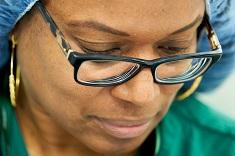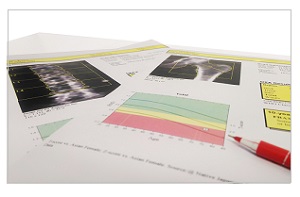
Bone Density (DEXA) Scan
What is a Bone Density Scan or DEXA Scan?
Bone Density or DEXA stands for Dual-energy x-ray absorptiometry. The DEXA scanner produces two types of X-Ray beams, sending each beam at different peaks of energy frequencies to target specific bones. Based on the combination of these two beams, the machine measures the amount of X-Ray that passes through the bone to determine if you have a risk for osteoporosis - a disease that causes bones to become more fragile over time. A bone density exam is the only test to diagnose osteoporosis.
What is the purpose of a DEXA scan?
- It is used to determine your risk of osteoporosis and bone fracture
- To monitor whether your osteoporosis treatment is working.
How do I prepare for DEXA scan?
There is very little preparation.
- Wear loose, comfortable clothing.
- Avoiding wearing clothing with metal.
- Avoid having any exam that requires a type of contrast, such as barium, injection of contrast material for CT or radioisotope scan. You may have to wait 10 to 14 days before undergoing a DEXA scan.
How is the DEXA scan performed?
- The patient lies on a padded table. There is a moveable arm above the patient that holds the X-Ray detector and below the table is a device that produces the X-Ray.
- Bones scanned include the lower back (lumbar spine) and hips. Some physicians will require your non-dominant wrist be scanned.
- The DEXA scan at our offices in New York's Southern Tier will take between 10 to 30 minutes
What are the risks of osteoporosis?
- Over the age of 50.
- Small body/low weight
- Menopause (women)
- Previous fractures
- Low Testosterone (men) * Loss of height
- Family history of osteoporosis
- Use of tobacco and alcohol
- Use of steroids/corticosteroid/prednisone
- Rheumatoid arthritis.
What do the results mean?
When it comes to our bone density exams at our locations in New York's Southern Tier, the Radiologist uses a scoring system established by the World Health Organization. The T score number shows the standard deviation between your measured bone loss and a young adult of the same gender. T score of -1 or above is considered normal T score -1.1 and -2.4 is considered as osteopenia, an increase risk for fracture T score of -2.5 and below is considered osteoporosis, high risk for fracture Z score is this number reflects the amount of bone you have compared with other people in your age group and of the same size and gender. The FRAX score estimates. Your 10 year fracture risk.
Does my insurance pay?
Insurance companies usually cover all or part of the cost if your doctor has ordered the scan as medically necessary. You may be subject to co-pays. Most insurances cover the DEXA test once every two years, or more often if it's medically necessary. Make an appointment.



